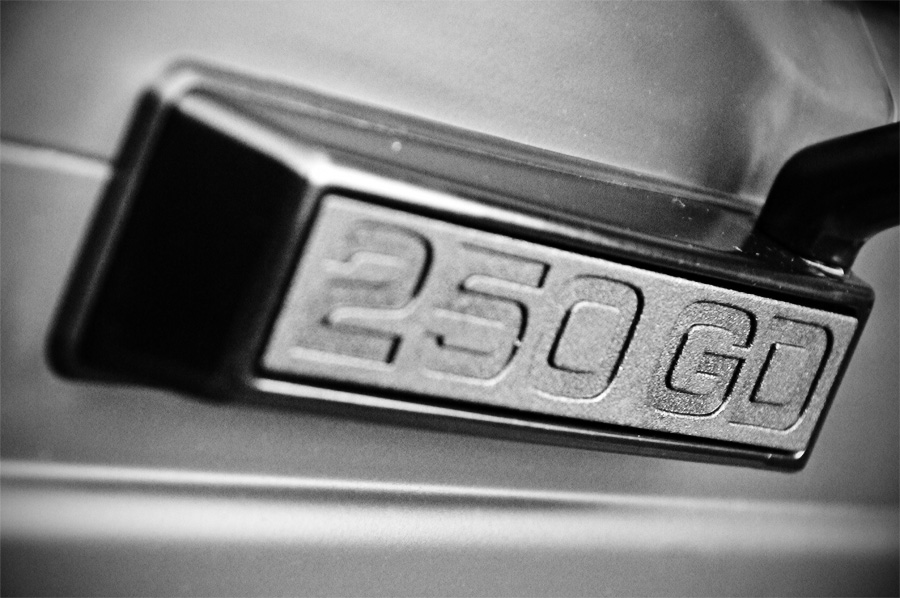History

The Mercedes-Benz G-Wagen is a well-established light utility military support vehicle with its origins in the 1970s from a suggestion by the Shah of Iran to Mercedes. The ‚G’ in the name is short for Geländewagen (or cross-country vehicle / tough terrain vehicle) and was Mercedes’s first venture into general four-wheel drives (although Mercedes did make some jeep-like vehicles in WWII).
The G-Class vehicle is now regularly used by more than 63 armies worldwide and this includes the German Armed Forces, Canadian Army and also the US Marine Corps.
Mercedes has actually guaranteed production of the standard G-Class for use as NATO support vehicles up until 2025.
The G-Wagen or G-Class is of a similar ilk to the Land Rover Defender commonly used by the British armed forces with a reputation for reliability and ruggedness.
G-WAGEN BODIES
The G-Wagen comes with a choice of three different body styles including: short-wheelbase two-door versions in both hardtop and convertible and also a long-wheelbase four-door version (more popular).
The G-Class is hand-built in Graz in Austria where the production line averages only 15 vehicles a day. These vehicles are designed to give a million miles of service for military use with nearly all of the components being fully serviceable and rebuildable. These 4x4s have three fully locking differentials, and with a low centre of gravity and solid axles are a well designed and tested military prospect.
MILITARY DESIGN
Military G-Wagen’s come in three variants: the ‚basic’ light utility vehicles (four doors and four seats), Command and Reconnaissance (C&R) models (rotating gun-mount in the centre of the roof) and the military police version (with blue and red rotating lights).
The vehicle is not armoured but can be fitted with armour modules replacing body panels to protect against rifle fire or grenade fragments. The payload of the unarmoured vehicle is around 1,500kg but with armour this is severely reduced to 500kg.
The G-Wagen in its most modern and useful version has space for a radio that does not reduce the passenger payload. The vehicle also has a roof rack for equipment transport and a trailer hitch for if required to carry more equipment via a trailer.
„The Mercedes-Benz G-Class vehicle is now regularly used by more than 63 armies worldwide.”
The C&R version has a hatched 80cm turret ring and a weapons platform that can handle C6 GPMGs and M2 heavy machine guns. The gunner is also protected by a gun shield. The C&R vehicles are three-seaters and carry a driver, commander and gunner.
The G-Wagen uses a standard 2.9l OM 612 turbo-diesel engine, which can develop 156hp / 115kW, with five-speed automatic gearbox, (other commercial versions use 5.5l petrol V8 (500hp) power units and there is a range of engines which could be used in the military version).
The fording ability of the vehicle is 600mm, the ground clearance 439mm, the side slope angle 30°, the approach angle 40° and the grade 60°.
MILITARY CUSTOMERS
Mercedes-Benz won a contract in 2007 to provide 1,100 G-Class vehicles to the Australian Defence Force (ADF). The Canadian Army is a long-time user and most recently took delivery of 1,159 vehicles that were ordered in 2003. Other users include the Croatian Army with 300 G-Wagens.
The Danish military has also introduced several versions of the G-Wagen including 1,300 of the 290 GD in 1985 and 1,000 of the 270 CDI in 2003. The Estonian army has also taken delivery of a small amount of G-Wagens as a part of a modernisation scheme.
The German Army uses the G-Class under the name ‚Wolf’ and more than 12,000 vehicles have been delivered to them in over 50 versions including ambulance vehicles and armoured vehicles used by the German Special Forces.
Source: http://www.army-technology.com




